OFFICIAL MAGAZINE OF DARUL ULOOM CANADA




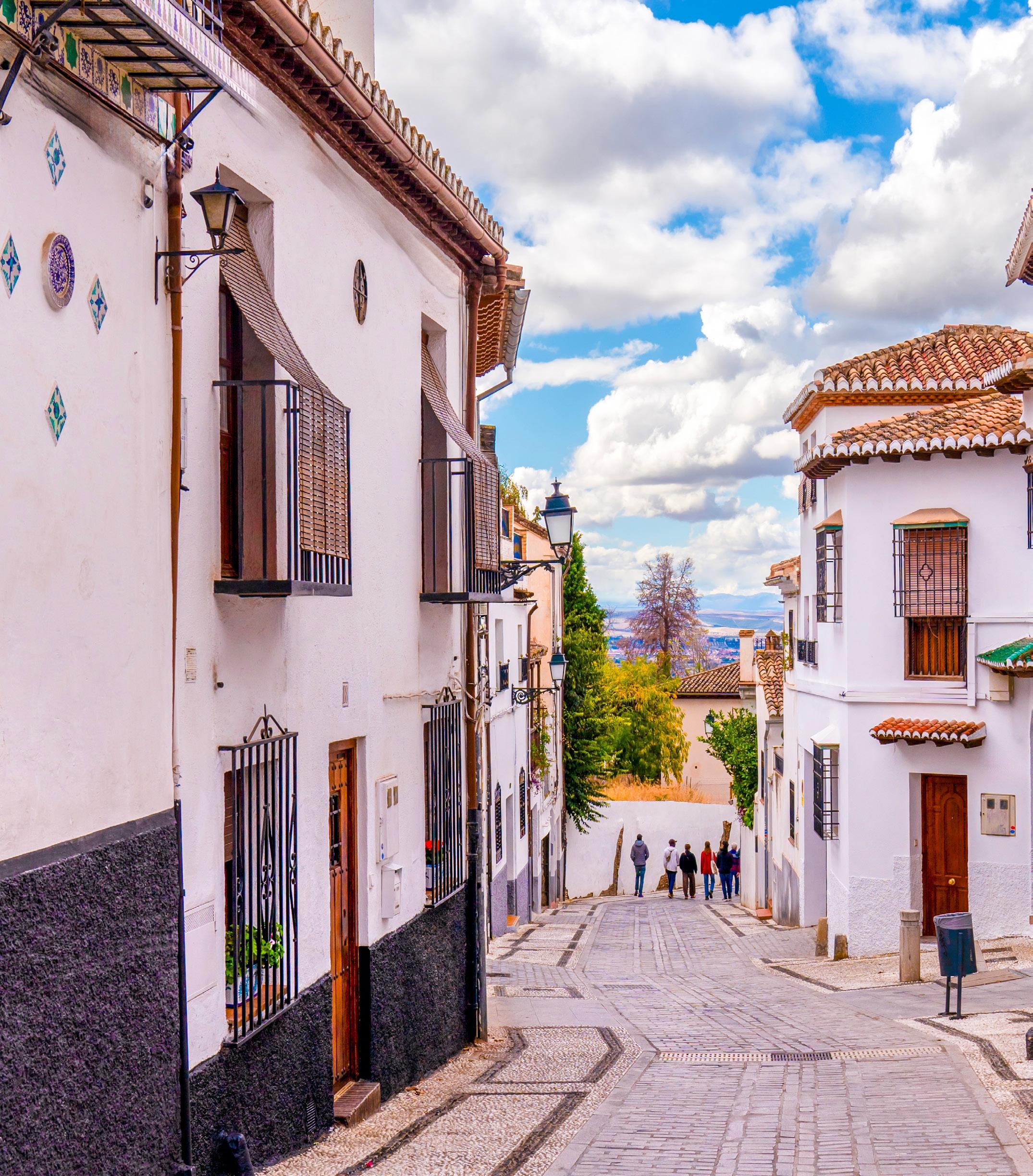
about the cover
Collage of hajj-related images




Andalusia was the crown jewel of Islam in Europe. According to the late orientalist
Montgomery Watt, Muslim Spain threatened the spread of Islam throughout Europe with its ornate palaces, colonnaded masjids, devotion of the Iberian Muslims to the faith, the interweaving of religion to the mundane, welfare system, premier education, proliferation of the arts and sciences, strong values, freedom and the renaissance spirit that awed European merchants who came for trade and commerce. The church seeing the growing influence of Muslim Spain on the Europeans and their awe of its prosperity and splendor framed the Muslims as occupiers of the Holy Land and incited Christendom against Muslims. This was the beginning of the Crusades.
In her article on Andalusia, Khadija Karatela writes about the golden age of arts, sciences, and faith, the Alhambra, and some of the famous scientists, artists, and scholars that hailed from the Iberian Peninsula.
In Mufti Taqi Uthmani’s article on hajj, he covers the basic rituals and other related points that are usually overlooked in other articles on the topic.
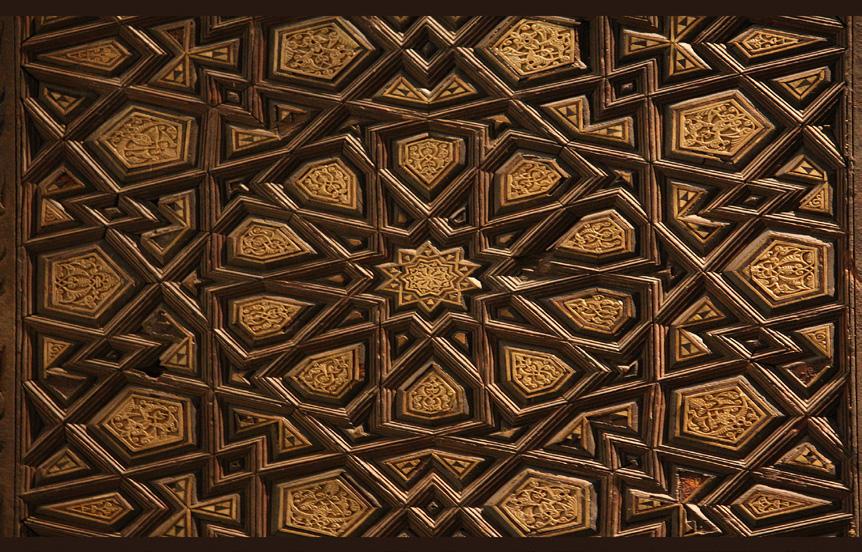
Patron
Hazrat Dr. Ismail Memon
Fatawa
Mufti Husain Ahmad Badri
Contributors
Mufti Omar Baig
Maulana Dr. Mateen Khan
Dr. Kamran Karatela
M. Zubair Ahmad
M. Ahmad Amin
Editor
Asim Ahmad
Attribution
“Spain Andalusia Granada BW 2015-10-25 1724-14” by Berthold Werner is licensed under CC BY-SA 3.0.
“File:Spain Andalusia Granada BW 2015-10-25 17-22-07.jpg” by Berthold Werner is licensed under CC BY-SA 3.0.
“Mina, Saudi Arabia” by Mohd Azli Abdul Malek is licensed under CC BY-NC-SA 2.0.
Photo by Tunahan Günkan on Unsplash
Photo by Ümit Yıldırım on Unsplash
Photo by Thomas T on Unsplash
E-mail office@ducanada.org
Website www.ducanada.org
Address
51 Prince St. N, Chatham, ON N7M 4J7, Canada
The views expressed in the columns of Insight magazine do not necessarily represent those of Darul Uloom Canada.
The articles published in this magazine may be reproduced with due acknowledgment.

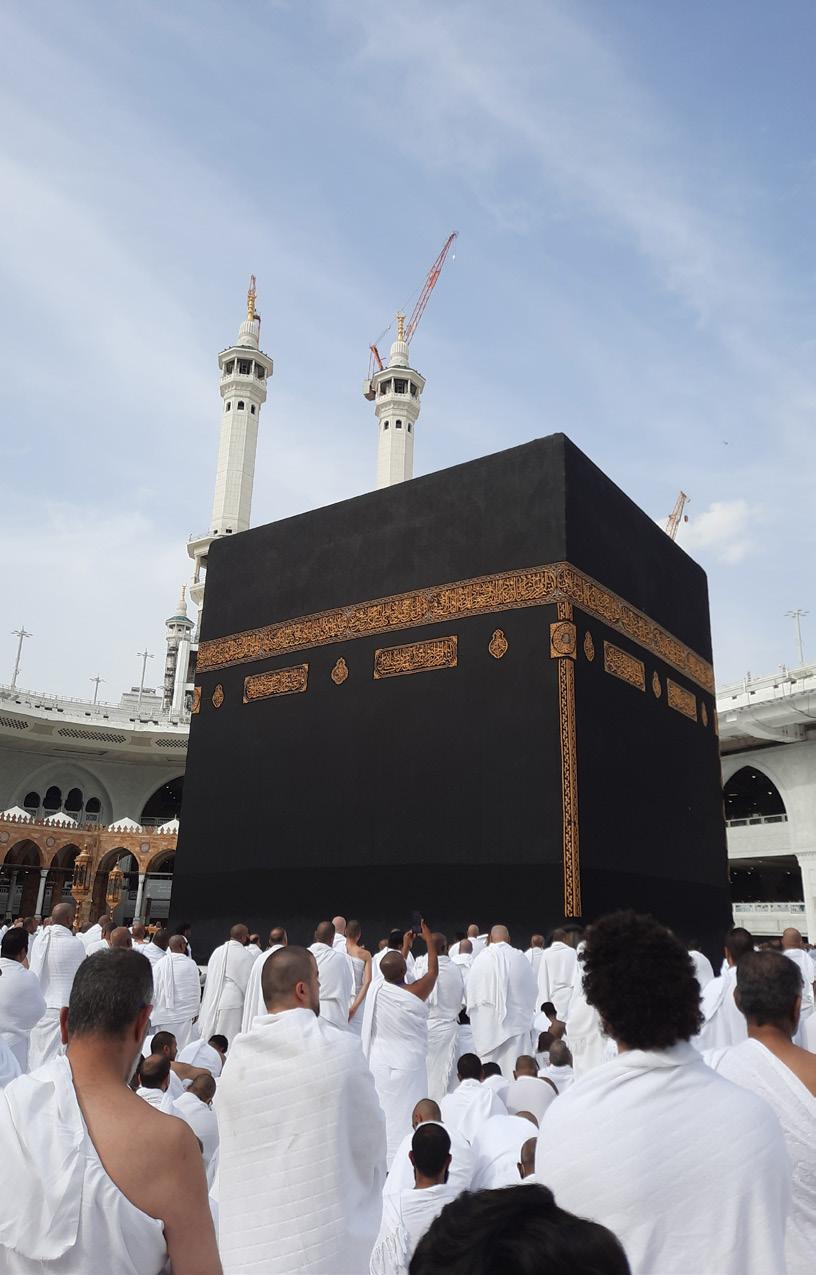
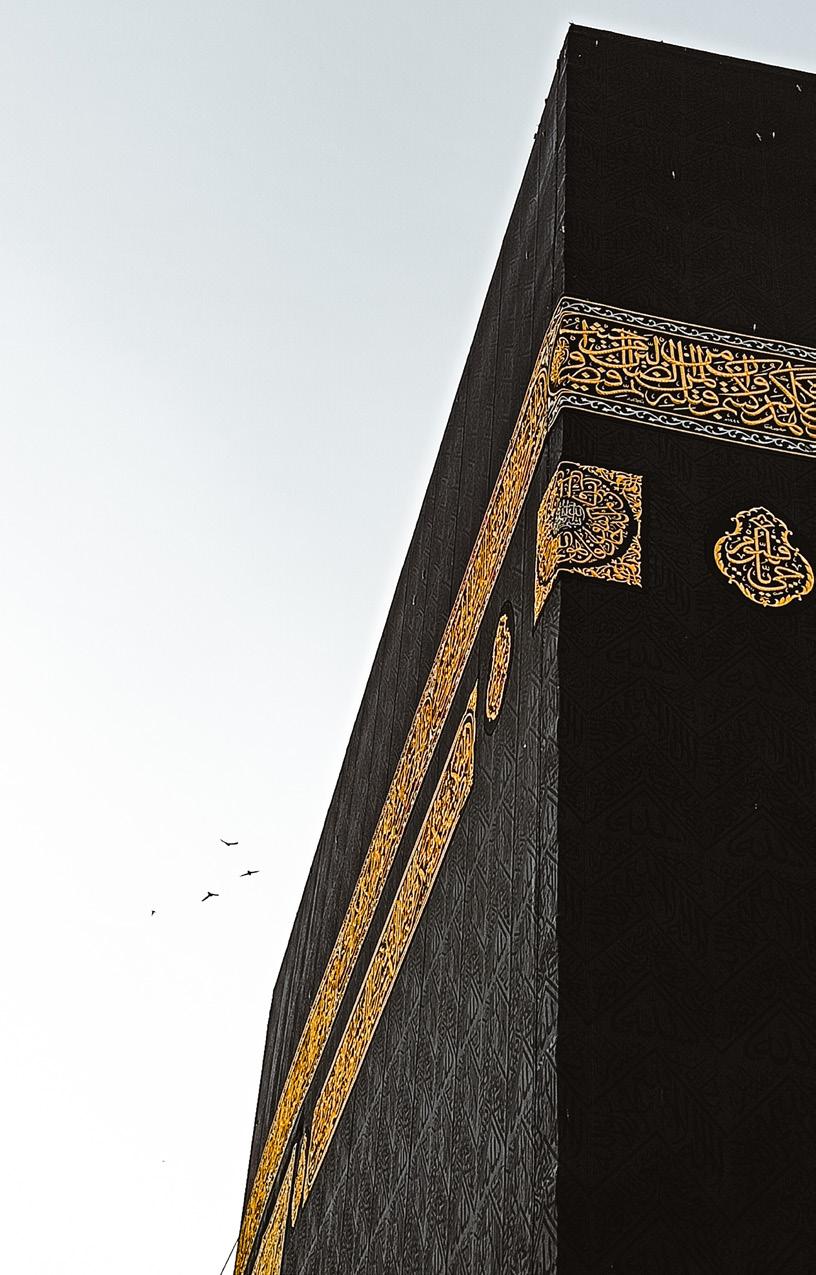
Dhul-hijjah is the last month of the Islamic calendar, which literally means ‘hajj’. Obviously, this name indicates that the great annual worship of hajj is performed in this blessed month, which gives it special significance. Some specific merits and rules relevant to this month are mentioned below:
The first ten days of Zulhijjah are among the most important days in the Islamic calendar. The Holy Prophet s said, “One fast during these days is equal to the fasting of one complete year, and the worship of one night during this period is equal to the worship in Lailatul-Qadr. Every Muslim should avail of this wonderful opportunity by performing as many ibada during this period as he or she can.
For example, if Yaum al-Arafah is being observed in Saudi Arabia on Friday, and in Pakistan
by Mufti Taqi
Uthmani
on Saturday, Pakistani Muslims should treat Saturday as Yaum al-Arafah and should fast on that day if they desire to benefit from the fast of Yaum al-Arafah.
The fast of Yaum al-Arafah has been emphasized by the Holy Prophet s as a mustahabb (desirable) act. According to a hadith, the fast of this day becomes a means of forgiveness for sins committed for one year.
Beginning from the Fajr of the 9 th up to the ‘Asr of the 13 th , it is obligatory on each Muslim to recite the takbir of Tashriq after every compulsory prayer in the following words.
Allahu Akbar, Allahu Akbar, La Ilaha Illallahu, Wallahu Akbar, Allahu Akbar wa lillahilhamd.
(There is no god but Allah and Allah is the greatest, Allah is the greatest and to Allah be -

longs all praise.)
According to authentic Islamic sources, it is obligatory on each Muslim to recite this takbir after every fard salah. For women also, it is commendable though not obligatory. Whether you are performing salah with congregation (collectively) or on your own (individually) makes no difference. You must recite the takbir. However, male Muslims should recite it in a loud voice while females should recite it in a low voice.
On Eid day the following acts are sunnah on the day of Eid al-adha:
1. To wake up early in the morning.
2. To clean one’s teeth with a miswak or brush
3. To take bath.
4. To put on one’s best available clothes.
5. To use perfume.
6. Not to eat before the Eid prayer.
7. To recite the takbir of Tashriq in a loud voice while going to the Eid prayer.
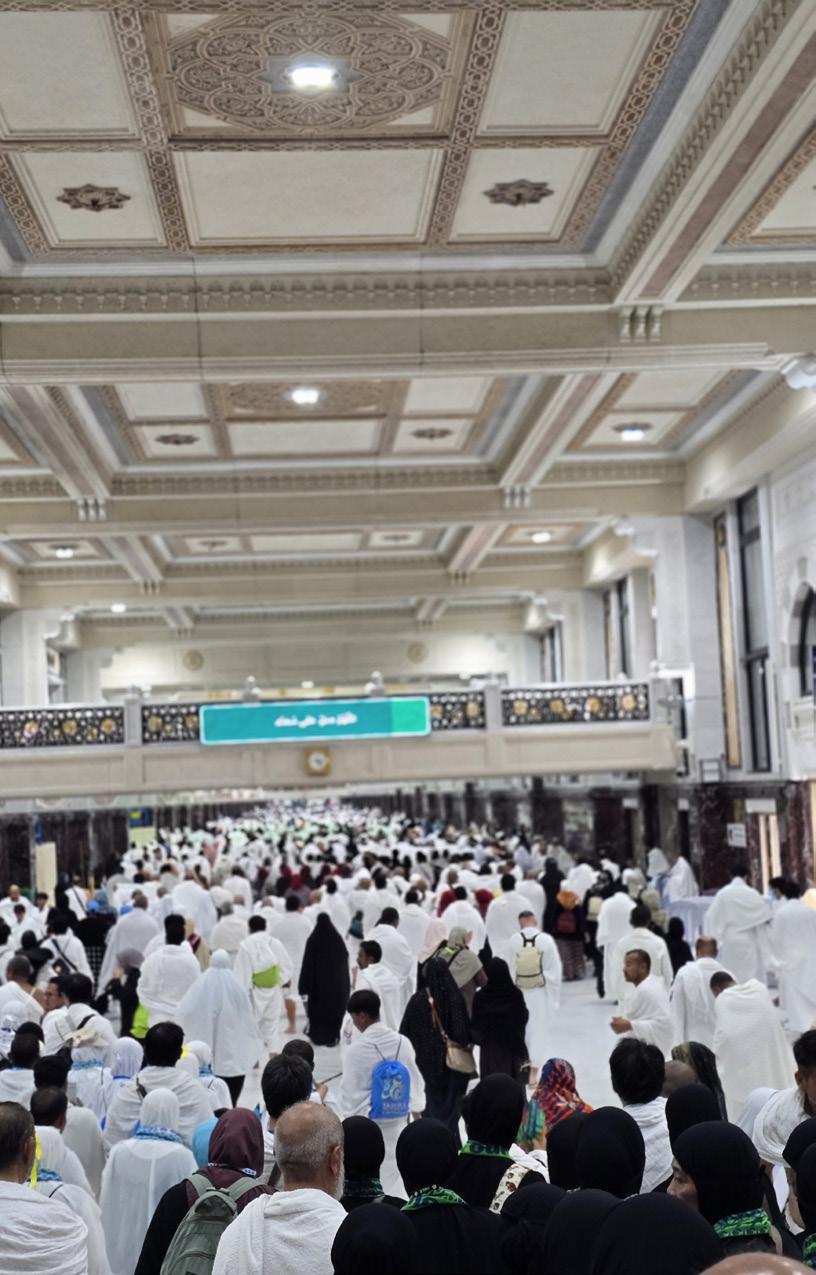
The Eid prayer has two raka’at performed in the normal way, with the only addition of six takbirs, three of them in the beginning of the first raka’ah, and three of them just before ruku’ in the second rak’a. The detailed way of performing the Eid prayer is as follows:
The imam will begin the prayer without adhan or iqamah. He will begin the prayer by reciting takbir tahrimah (Allahu Akbar). You should raise your hands up to the ears, and after reciting the takbir, you should set your hands on your navel. The imam will give a little pause during which you should recite thana’ (Subhanakallahumma .:.). After the completion of thana’, the imam will recite takbir (Allahu Akbar) three times. At the first two calls of takbir, you should raise your hands up to the ears, and after reciting the takbir (Allahu Akbar) in a low voice, should bring your hands down and leave them earthwards. But, after the third takbir, you should set them on your navel as you do normally.
After these three takbirs, the imam will recite the Holy Qur’an, which you should listen to
calmly and quietly. The rest of the rak’ah will be performed in the normal way.
After rising for the second rak’a, the imam will begin the recitations from the Qur’an during which you should remain calm and quiet. When the imam finishes his recitation, he will recite three takbirs once again, but
this time it will be just before bowing down for ruku’. At each takbir you should raise your hands up to the ears, and after saying ‘Allahu Akbar’, bring them down and leave them earthwards. After these three takbirs have been called and completed, the imam will say another takbir for going down into the ruku’ position. For this takbir, you need not raise your hands. You just bow down for your ruku’ saying Allahu Akbar. The rest of the salah will be performed in its usual way.
In this salah of Eid, khutbah (sermon) is a sunnah and delivered after the salah, unlike the salah of Jumu’h which is compulsory and delivered before the salah. However, listening to the khutbah of Eid salah is wajib or necessary and must be listened to in perfect peace and silence.
It is a sunnah for the imam to begin the first khutbah by reciting takbir (Allahu Akbar) nine times and the second khutbah with reciting it seven times.
The way of Eid prayer described above is according to the Hanafi school of Muslim jurists. Other jurists like Imam Shafi’i have mentioned a different way to perform
it. They recite takbir twelve times before beginning the recitations of the Holy Qur’an in both the rak’a. This way is also permissible. If the imam is of the Shafi’i school, you may also follow him. Both ways are based on the practice of the Holy Prophet s .
The most important way of worship performed in this month is hajj, one of the five pillars of Islam. The Muslims from every part of the world assemble in Arabia to perform this unique way of worship. Hajj is a worship, which requires at least five days to be performed in its proper way. There are detailed rules for the different rituals of hajj and many books. The present article does not


Hajj is obligatory only once in a lifetime. After performing the obligatory hajj; one is not required to perform it again.
aim to elaborate all these details. However, some basic information about its obligation is as follows:
1. Hajj is obligatory on every adult Muslim who can afford to go to Makkah during the hajj season, whether on foot or by any other form of transportation.
2. If a person can travel to Makkah to perform hajj, but he cannot travel to Madinah, hajj is obligatory on him also. He can perform hajj without visiting Madinah.
3. A Muslim woman cannot travel for hajj unless she is accompanied by a mahram (i.e. husband or relative like son, father, brother etc.) If she does not find any mahram to accompany her, hajj is not obligatory on her until she finds one. However, she must make a will that in case she dies before performing hajj, his heirs should arrange for her hajj-e-badal out of her left over property.
4. Hajj is obligated only once in one’s life. After performing the obligatory hajj, one is not required to perform it again. However, he can perform the nafl (optional hajj as many times as he or she wishes.)
In the end times, such men will appear who will exchange their deen fof the dunya. They will wear nice clothes for the people; their tongues will be sweeter than sugar and they will have hearts of wolves. Allah says, “Are they trying to deceive Me or being audacious with Me?” Tirmidhi
QI had a question regarding my salah during my last hajj. My stay in Makkah was 14 days long. I was under the impression that any time a person stays in an area for 14 days or longer, they would offer full prayers. For this reason, I did not perform qasr; whenever I prayed individually, I prayed in full. After I returned, someone told me I should have been performing qasr when praying individually. What is the correct stance in this matter? If I were required to do qasr, would I need to repeat any prayers I prayed in full?
AWhen an individual travels to Makkah intending to stay for fewer than fifteen days, he is obliged to pray his salah in a shortened manner known as qasr. If a traveler deliberately performs the full salah without shortening it, this act is deemed makruh (disliked). However, in cases of misunderstanding and confusion, if the traveler performs the full salah, the prayer remains valid provided they sat in the first tashahhud.
QIs shortening the prayers in ‘Arafa a part of the hajj rituals or are the prayers only shortened if one is a traveller? Many individuals perform 2 rakahs for Zuhr and Asr on the day of ‘Arafa, even when the imam is a resident (muqeem) and not a traveler (musafir).
AThe shortening of prayers in ‘Arafa or anywhere else is based on the condition of being a traveller. If a person is a traveller, they would shorten their prayers. If they are not travellers, they would pray in full. The same guidelines apply to the imam in


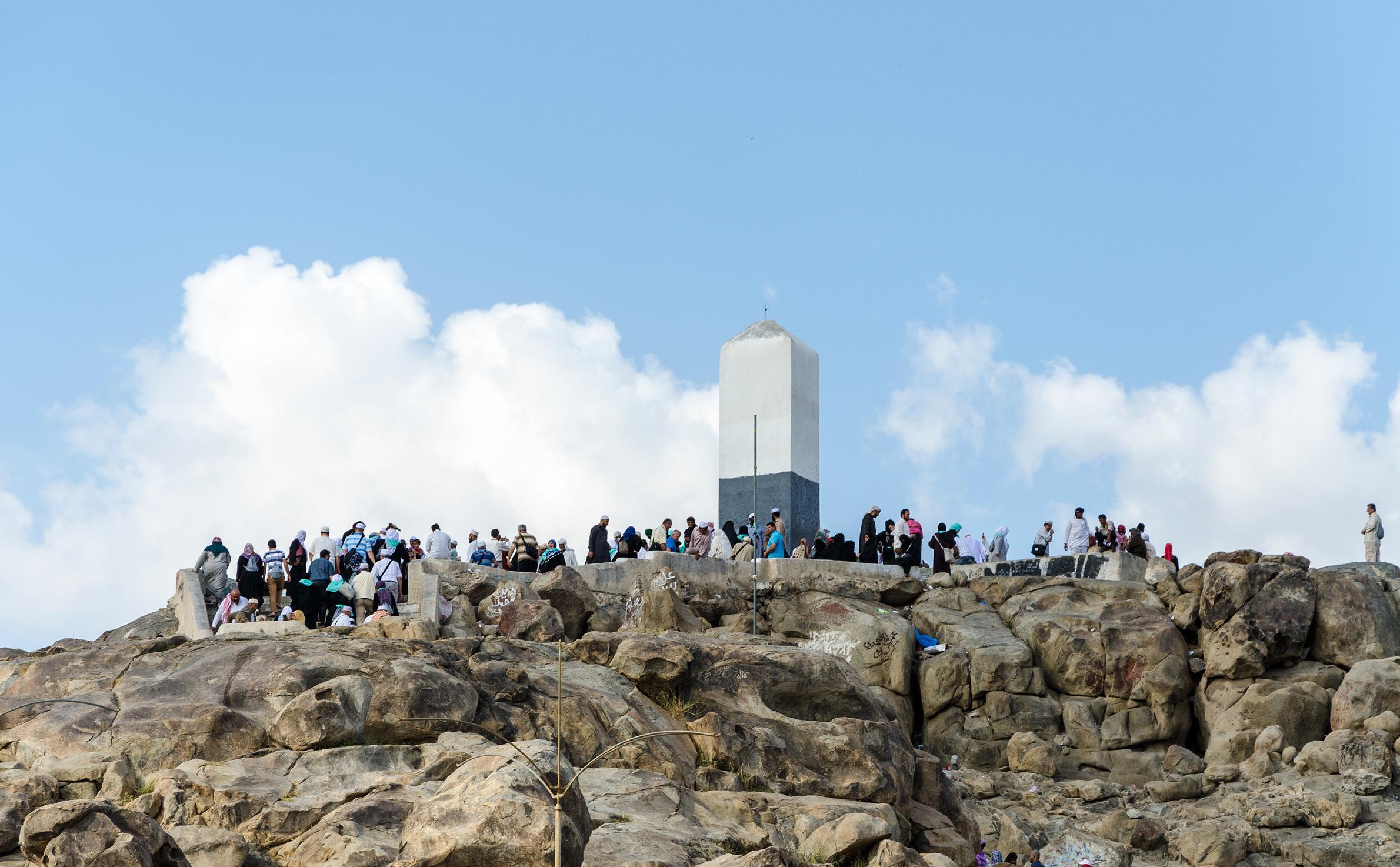
‘Arafah. If the Imam is not a traveller, he must complete the full salah. Anyone praying behind such an imam must complete the entire salah with him. The salah must be repeated if the imam shortens his prayers despite not being a traveler.
QIs it permissible for a pilgrim to carry out the act of rami, stoning of the jamarat, specifically during the days of Ayyam-e-Tashreeq (11th, 12th, and 13th of Dhul-hijjah), before zawal?
AThe time for stoning of the Jamarat on the 11th and 12th of Dhul hijjah begins after zawal (the start of Zuhr) and lasts until subh sadiq (before Fajr salat) the next day. If the rami is offered before zawal on the 11th or 12th of Dhulhijjah and not repeated after zawal, damm (sacrifice of a goat or equivalent
within Haram) is required. The timing for rami on the 13th of Dhul hijjah begins after subh sadiq (Fajr), although it is sunnah to delay it until after zawal.
QI have a question regarding the kaffarah (expiation) for intentionally breaking fasts during Ramadan. I intentionally broke three of my fasts. My question is specifically about the requirement for the kaffarah fasting period.
Do I need to fast for 60 consecutive days for each of the three fasts which I broke, resulting in a total of 180 days of fasting? Will it suffice for me to fast 60 consecutive days once, and make up the three missed fasts (qadha) by fasting for three separate days?
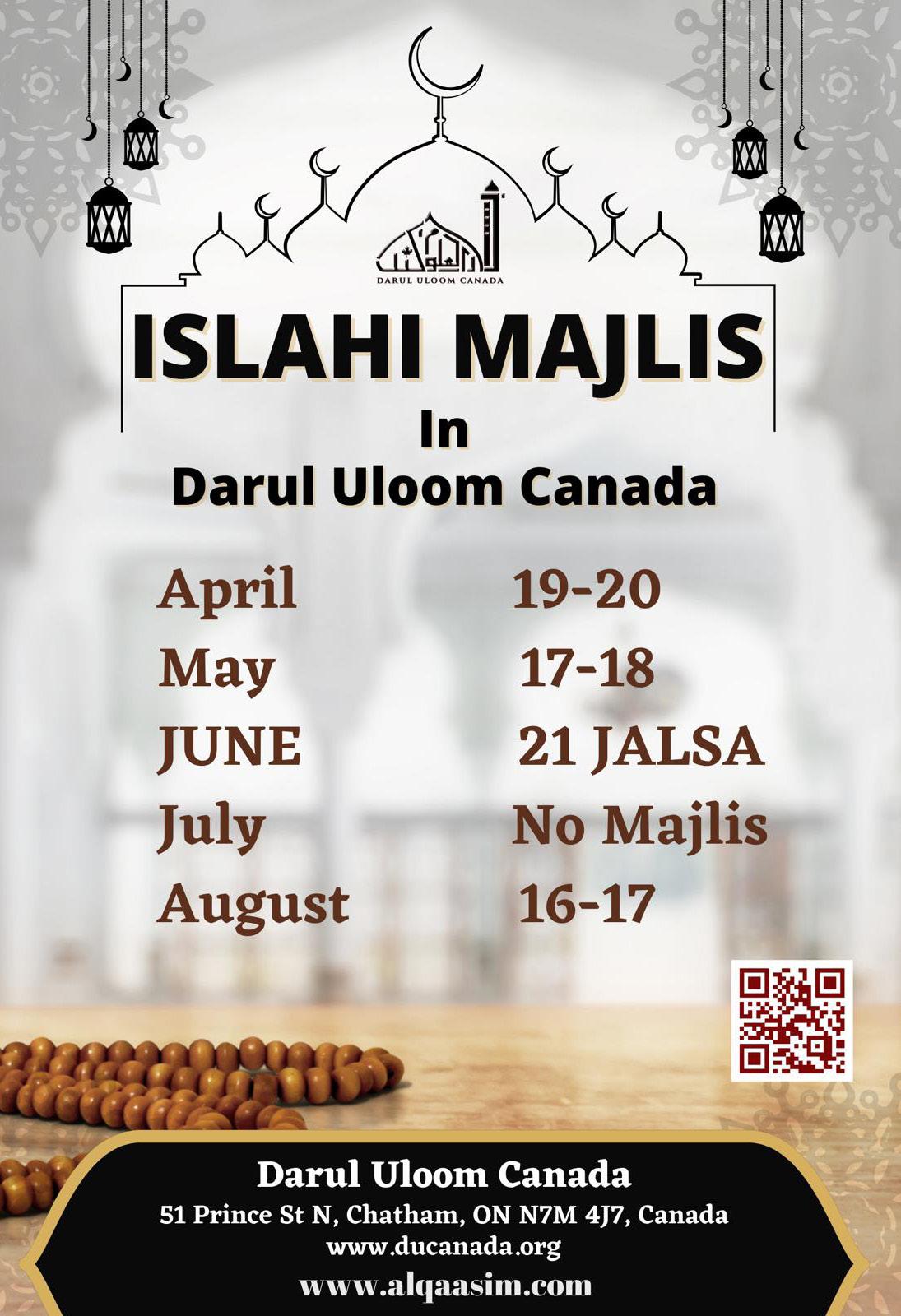


AIn principle, if someone neglects to fast during the month of Ramadan without a legitimate shar’i reasoning, he must make up for the missed fasts (qadha) and repent for the sin committed. If a person initiates a fast and purposely breaks it without a justifiable reason, they are required to offer qadha (makeup) for each missed fast. Additionally, they must complete a kaffarah (compensation) of fasting for 60 consecutive days. One kaffrah would be sufficient for all three fasts that were broken.
QUpon whom is udhiya necessary? Instead of sacrificing an animal, would it be permissible for me to donate an equivalent amount to charity as this seems to be more beneficial to those in need?
AUdhiya is an act of worship which is incumbent upon all Muslim adults who possess excess wealth over the threshold of nisab at the break of dawn on the 10th of Dhul-hijjah. This obligation will only be fulfilled by the sacrifice of an animal. Giving charity equivalent to the value of an animal would not fulfill this specific obligation.
QIs it permissible for one to slaughter his animal of udhiyya before performing his eid prayer?
AIn principle, one is allowed to do his qurbani after the Eid salat is performed in his city, irrespective of whether he has performed the Eid salat himself or not.
QWhat is the ruling for cutting one’s hair or nails from the beginning of Dhul-hijjah until Eid al-Adha?
AWhoever is intending to sacrifice an animal for ‘Eid, it is desirable (mustahab) for them to avoid removing any hair from their body or clipping their nails from the time the moon is sighted for Dhul-hijjah until the animal is sacrificed. Consider the following hadith:
Um Salama j reports that the Messenger of Allah g said, “When you see the moon of Dhulhijjah and you intend to sacrifice (for udhiya), then you should refrain from (cutting) hair or (clipping) nails”(Muslim).
However, if someone has not removed their excess hair (i.e. hair below the navel or underarms) for 40 days or more, they should not delay in removing that hair even if the month of Dhul-hijjah has commenced, as keeping excess hair for longer than 40 days is


prohibited.
A person realizes that he did not slaughter an animal and offer udhiyya years ago, how should they offer qada for the missed qurbani?
If qurbani was wajib upon an individual and he missed slaughtering the animal at its designated time, he will have to make up for it by giving cash equal to the value of the animal in charity.
QA person performed qurbani after pelting the Jamarat on the 10th of Dhul-hijjah. Afterward, they shaved their head, took a shower, and exited the state of ihram. Later, when they performed tawaf ziyarat, they were not in ihram, so they did not complete raml (fast walking in the first three circuits) and did not keep their right shoulder exposed. Was their approach correct, or do they incur any penalties?
AOnce a person completes the three essential acts—stoning the Jamarat (rami), offering the qurbani, and shaving the head—they are released from ihram. At this stage, ihram is no longer required for tawaf ziyarat. Raml (fast walking) is only applicable in tawaf when one is performing sa’ee afterwards. Similarly, exposing the right shoulder (idtibah) is only done when in ihram. Therefore, the actions were correct, and no penalty (damm) is required.

Imam Abu Yusuf writes in Kitab al-Khiraj, “Any Muslim who defames the Prophet s, calls him a liar, finds fault in him, or belittles him in any other way, is a kafir, and his marriage will be annulled.”
The Ahl Qibla (who call themselves Muslim) but oppose the haqq and are in deviation will not be considered kafir until they reject the daruriyat deen [like the one above about defaming the Prophet s]. Daruriyat deen is the indisputable tenets of deen upon which the Umma unanimously agrees was espoused by the Prophet s, like the belief that the universe is transient and the resurrection of body and soul. Ahl Haqq are those who do not disagree with the umma on the necessary tenets of the deen like transience of the universe, resurrection, that the divine knowledge encompasses everything major and minor, and any other fundamental upon which there is unanimity in the umma. Thus, the person who is devoted to worship, steadfast on all the commandments but believes that the universe is eternal, disbelieves resurrection or says that the divine knowledge does not encompass the molecular world is a disbeliever.
The following authentic narration appears under the bio of Hakam bin Nafi in Meezan al-I’tidal: I swear by Allah, a believer sometimes takes evidence from the Qur’an but is defeated while a hypocrite cites an ayah of Qur’an
and defeats his adversary (because he is cunning and deceitful). He skillfully distorts the meaning of the Qur’an and gets the better of the Ahl-haqq while the believer is trustworthy and upright. He will never attempt to play with the meaning of the Qur’an, neither will he modify it. Thus, he is overwhelmed and defeated by his deceitful adversary.
Khalifa Abdul Malik bin Marwan hung a man by the name Harith who claimed prophethood. Likewise, many other khulafa and sultans throughout the ages executed such impostors with the full support of the ulama. And he who opposes the opinion of the ulama in this matter is no longer a believer.
Indeed, those who abuse our revelations are not hidden from Us. Who is better: the one who will be cast into the Fire or the one who will be secure on Judgment Day? Do whatever you want. He is certainly All-Seeing of what you do [41:40].
That is, Allah says, though these distorters can hide their true beliefs from the public and use false interpretations to conceal their kufr, but I am fully aware of their deceit. They cannot hide from Us. In the tafsir of the word yulhiduna (abusers), Ibn Abbas says, "They take the words of Allah out of context and their true intended meaning."
Qadi Abu Yusuf explaining the ruling about the mulhid and zindiq says, "This same disagreement exists regarding the zindiq who
turn mulhid and call themselves Muslim (they will be required to make tauba)."
While Yazeed bin Abi Sufyan r was ameer of Shaam, some people were caught drinking alcohol who claimed that drinking of alcohol was permissible because of the ayah which states, "There is no blame on those who believe and do good for what they had consumed before the prohibition, as long as they fear Allah, have faith, and do what is good; then they believe and act virtuously, then become fully mindful of Allah and do righteous deeds. For Allah loves the good-doers" [5:93]. Yazeed raised the matter before Ameer al-Mu'mineen Umar bin al-Khattab g who called a council and asked the Sahaba about what to do since the interpretation indicated that these people had reverted to kufr. Most of the Sahaba said that they must be executed, but for Ali g who remained quiet. When Ameer al-Mu'mineen asked his opinion, he replied that they should be asked to make tauba. If they accept, they will be punished with 80 lashes otherwise they will be executed. All the Sahaba agreed to this opinion and the matter was decided. Thereafter, they all repented and were punished for drinking alcohol [rendition of the original].
- taken from Ikfar al-mulhideen by Maulana Anwar Shah Kashmiri

TAHFEEDH - ALIMIYYAH - IFTAA - DAY SCHOOL



CAMPUS AMENITIES:
- Expansive 70,000 sf Facility - Comfortable student dormitories - Delicious student friendly menu - Comprehensive library - Soccer field - Gymnasium - Swimming pool - Fitness center & more!









Not too long ago, before my first child was born, I remember reading numerous books and articles about parenting. I would also frequently listen to lectures and read material from Muslim and nonMuslims alike to see if I can find some key parenting points and tips. As I was reading, I came across a thoughtprovoking African proverb that completely changed my perspective of tarbiya and the shared communal responsibilities between all individuals: “It takes a village to raise a child.”
As I began to ponder upon the concise wording of this proverb, I immediately realized that the message within is entirely in line with the Islamic philosophy of upbringing. In Islam, although the primary responsibility of a child and their upbringing lies on the parents, the complete development of a child is done at a communal level. The Islamic philosophy of upbringing is based on collectivism and not individualism. Each person in the community is responsible for ensuring communal prosperity through their respective contributions. Upon pondering further, I realized that
“Each of you are responsible and will be asked about your responsibility.”
Bukhari
this philosophy of collectivism is not only restricted to the upbringing of children but is a distinguishing feature of all relationships in Islam. Furthermore, it is this Islamic philosophy which helps ensure communal prosperity. When a person begins to look at the interrelationship between every member of the community, their approach to problems people face is different. It is no longer their problem, it’s our problem. This philosophy is consistent with the teachings of the Messenger s. Consider the following ahadith:
Nu’mān bin Bashīr g narrates that the Messenger of Allah s said, “The believers are similar to a single body; if the head is in pain, the entire body will experience fever and insomnia.”
Abū Mūsā al-Asha’rī g narrates that the Messenger of Allah s said, “The (relationship) of one believer with another is similar to that of a building; one part strengthens the other.”
In the aforementioned ahadīth, the Messenger s has clearly framed the entire Muslim ummah as one unit. Each one of us is meant to strengthen the other, feel the pain of the other, and support one another. The articulate wording used in the simile used by the Messenger s sends such a profound message: our success lies in the


success of others. A structure is only as strong as its weakest component. If components of the structure are missing or damaged, the entire structure suffers. Similarly, if our brothers and sisters in our communities are not thriving or successful, their lack of success will also affect us.
If a person was to go through the various rulings in Islam and analyze them, they would find a common theme of communal responsibility. The forms of worship in Islam all have some features that connect or help the community.
In the obligation of discharging zakah, a person helps the needy in their community. In the obligation of salah, we find that the men are to congregate daily in the Masjid with other people of the community, giving them a chance to know how everyone is doing. In the obligation of fasting, people are to avoid food or drink throughout the day, allowing them to sympathize with those who are needy and regularly experience starvation. In the Hajj obligation, a Muslim can see the situation
of other Muslims around the globe. Although these communal benefits are not the primary purpose of these modes of worship, it is clear that ensuring communal prosperity is a key feature of Islam. Now if a person through the same lens continues to look at the other teachings of Islam, such as: enjoining good and forbidding evil, refraining from verbally or physically harming others, the prohibition of backbiting and spreading rumours, the virtues of removing harmful items from the pathway, the virtues of building a masjid, the virtues of building a well, etc., they would now see all the rulings in Islam revolve around everyone fulfilling their role to help the next person succeed.
If a person fails to adopt and adhere to the aforementioned Islamic philosophy of communal responsibility and begins to look at each person with an individualist attitude, the fabric of society begins to deteriorate. For example, one can just look at spousal relationships. Any spousal relationship in which responsibilities and rights have to be litigated (whether through a traditional court or a fatwa) is bound to fail. Successful relationships are never dichotomous. Rather, both individuals must work in harmony. The rights and responsibilities of each spouse are meant to be complementary of the other. Most breakdowns in spousal relationships are due to the spouses not understanding the complementary nature of their roles. For example, there is no question that Islam puts most of the domestic responsibilities on the wife and the primary bread-winning responsibilities

on the husband. However, these are not binary roles completely unrelated to one another. Rather, this is a system set in place by Allah using the natural strengths of both spouses to complement the other. This does not mean that a wife cannot or should not aid the husband in his responsibilities nor that a husband cannot aid and assist his wife in her domestic responsibilities. We find many examples of female companions assisting their husbands in their labour along with examples of men helping their wives at home.
‘Ayesha j was once asked what the

Messenger of Allah s would do at home. She replied, “He would be busy in helping his family. Whenever salāh time would start, he would then leave to the Masjid.” (al-Bukhāri)
It should also be noted that the Messenger s was not only the bread-winner for his multiple homes. Rather, he was also the head of the Islamic world, the imam of his local community and responsible for fulfilling the obligations of prophethood to ensure the religion of Islām reaches the entire world and lasts until the day of qiyāma. Despite all of this, he made sure to always take out time to help at home. Once each spouse
It should also be noted that the Messenger s was more than the bread-winner for his multiple homes. He was also the head of the Islamic world, the imam of his local community and responsible for fulfilling the obligations of prophethood to ensure the religion of Islām reaches the entire world and lasts until the day of qiyāma.

looks at themselves and their roles to complement the other, the relationship will strengthen. Conversely, the more a person views spousal responsibilities as absolutely binary, the relationship will weaken.
Similar to the aforementioned example of spousal relationships, the same applies to any relationship. Teacher/ parent relationships, parent/children relationships, and brother/sister relationships are all suffering due to the individualist mentality which has creeped into the Muslims. As Muslims, we have responsibilities towards our families, neighbours, and society at large. We are responsible for ensuring our brothers and sisters across the globe are prospering. If we do not uphold this responsibility, then we have been warned by the Messenger of Allah s:
“Each of you is responsible and will be asked about your responsibility.” (Bukhari)
Now, more than ever, it is time to heed that warning. Otherwise, we will all be questioned and held accountable.
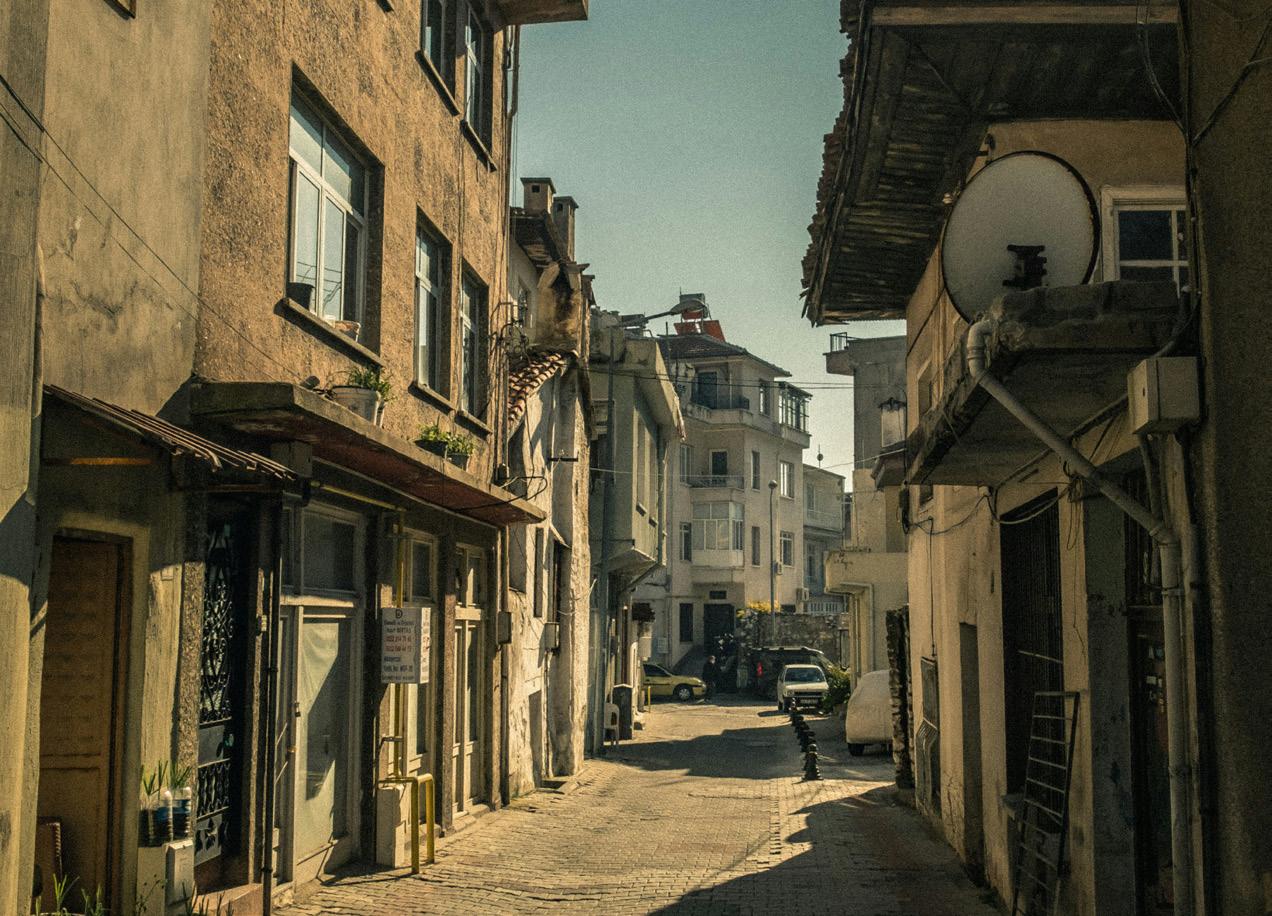
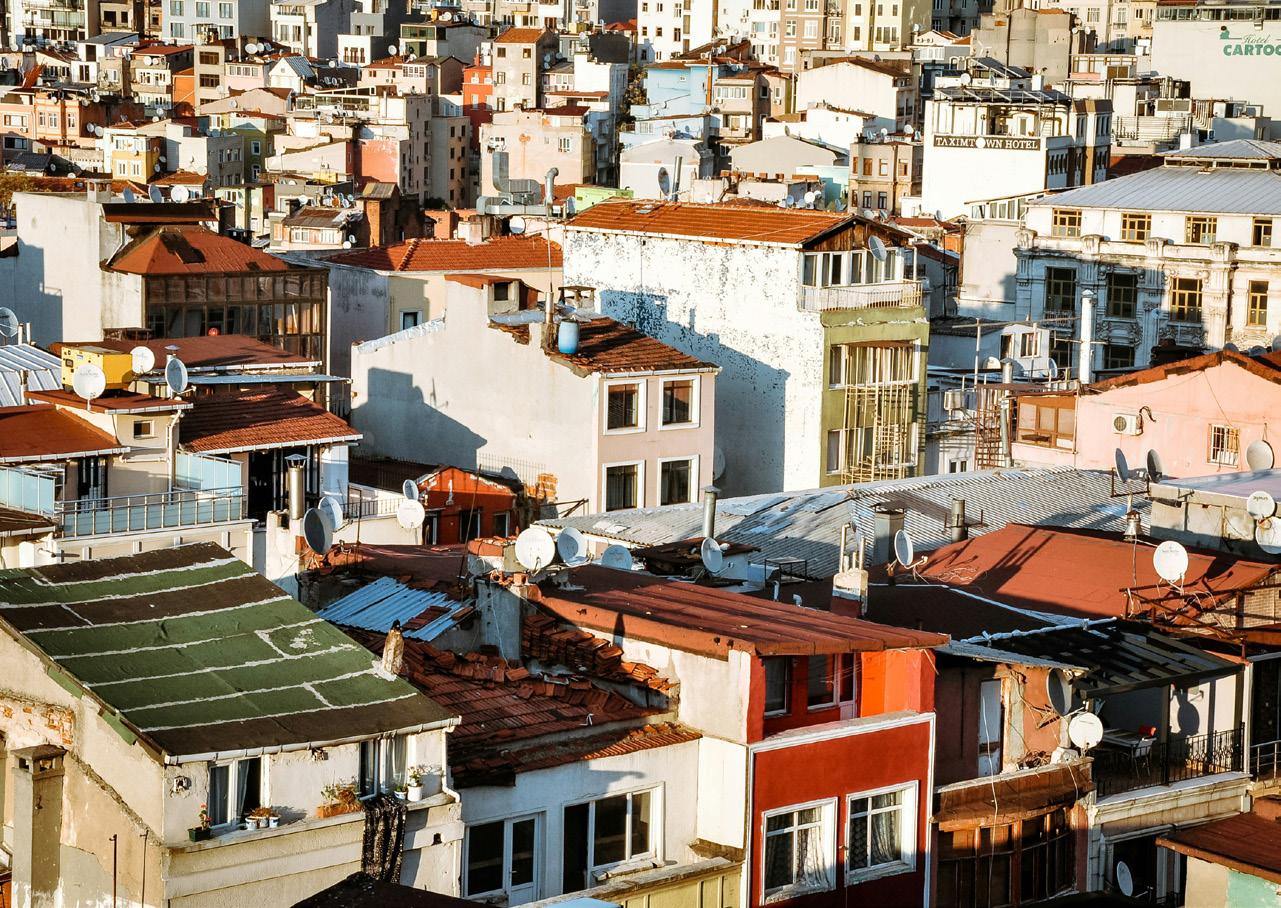
“But when they are persecuted in the way of Allah, they take the persecution of men, as equal to the punishment of Allah” [29:10].
Harut and Marut the two angels said, “We are but a test, so do not disbelieve” [2:102]
“Taste your torment. This is that for which you were impatient” [51:14].

To be obsessed or to be enamored by something.

Wasasa of Shaytan is also known as fitnat al-sadr (fitna of the chest).
Questioning of Munkir and Nakir in grave is known as fitnat al-qabr
The fitna of life is to stray from the truth
AL-FATNA
To burn or melt something down. Allah says: It is the Day when they will be heated on the Fire [51:13].
FATTAN
Someone who is fascinating, captivating, and charming.
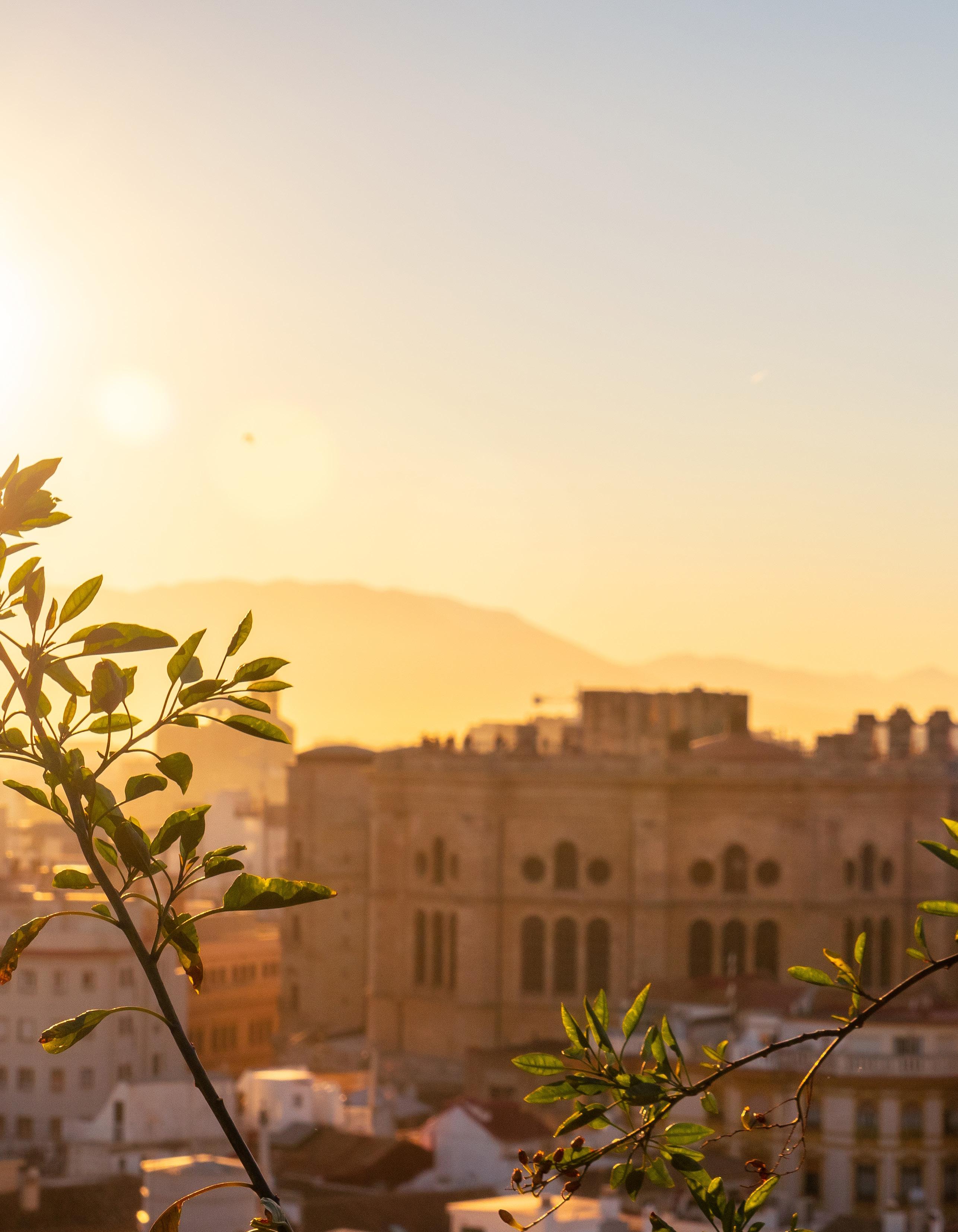
by Khadija Karatela
In the heart of southern Spain, where the sun casts a golden glow over rolling hills and ancient cities, lies a land that was once a shining jewel of the Islamic Empire - Andalusia; a land steeped in history, art, and the enduring legacy of a civilization that flourished for centuries. A place where the whisper of history still echoes through its sun-dappled streets and majestic ruins, Andalusia holds a profound significance for the Muslim world. It stands as a testament to the brilliance of a civilization that once spanned continents and shaped the course of history. The legacy of Al-Andalus continues to captivate the imagination, for it was not only a political entity but a flourishing center of culture, intellect, and spiritual depth. During the Golden Age of the Islamic Empire,
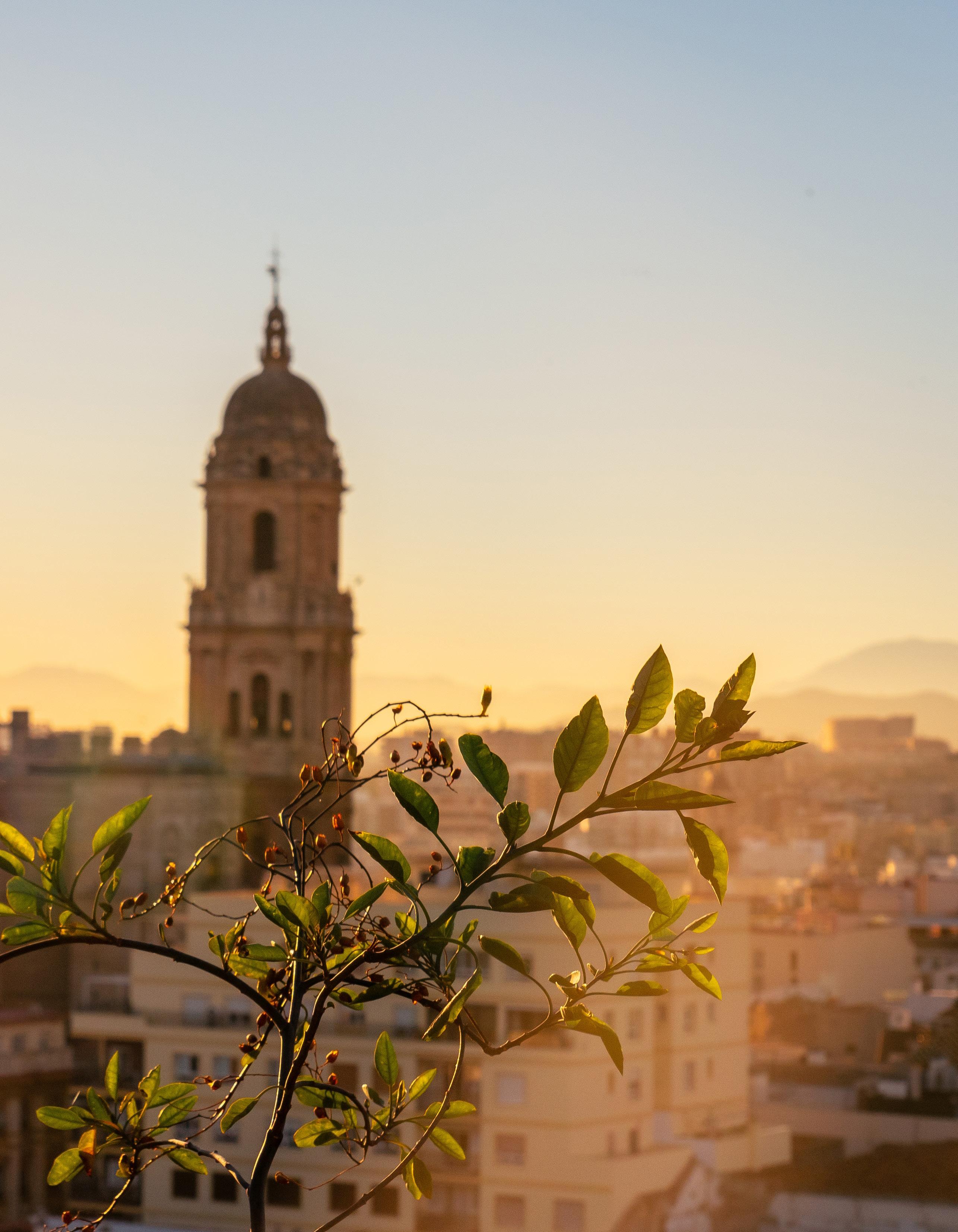
Andalusia became a beacon of light in a darkened world, a land where knowledge, art, and wisdom thrived under the governance of Islamic principles.
The Golden Age of Andalusia stands as one of the most illustrious chapters in the archives of world history. Spanning the 8th- to the 15th century, this era, known as Al-Andalus, was marked by profound achievements in science, philosophy, architecture, and the arts. It was a time when diverse cultures and religions coexisted in a fragile yet remarkable harmony, when the intellectual and artistic pursuit of knowledge was revered, and when the poetic soul of the region found its expression in the very streets of its cities.
The story of Andalusia’s Islamic Golden Age begins in 711 AD, with the conquest of the Iberian Peninsula by the forces of the Umayyad Khilafah. Led by general Tariq ibn Ziyad, the Islamic armies swept across the Peninsula, laying the foundation for what would become one of the most sophisticated and vibrant centers of power in the medieval world. The fall of the Visigothic Kingdom marked the beginning of a new era, where the principles of Islam would be intertwined with the ancient traditions of the Iberians and the legacy of Rome.

This conquest was not simply a political victory; it was the fulfillment of a divine promise, a mission to spread the word of Allah, to offer guidance to people, and to establish a just and harmonious society under the principles of Islam. The establishment of the Islamic state in Al-Andalus marked the beginning of what would become one of the most glorious chapters of Islamic civilization, a period defined by spiritual devotion, intellectual pursuits, and cultural splendor.
Andalusia was a land where the teachings of the Qur’an and the Sunnah were not confined to the mosque or home but were woven into the very fabric of society. It was a place where the implementation of Islamic law (Shari’a) was seen as the foundation for justice and the promotion of virtue, where the role of knowledge, compassion, and tolerance was central to governance and daily life.
Under the Umayyad Khilafah of Córdoba, which became the capital of Al-Andalus, the region blossomed into one of the most advanced and prosperous societies in the world. This era was not just about political power but about the practical application of Islamic values in every facet of life. Córdoba, once a small town, grew into a sprawling kingdom, one of the largest cities in Europe, and a center of learning, art, and culture.
Perhaps the most defining feature of the Golden Age of Al-Andalus was its intellectual vibrancy. This was a direct reflection of the teachings of Islam, which stresses the importance of seeking knowledge. The great libraries of Córdoba, which housed thousands of manuscripts in various fields—philosophy, science, medicine, and literature—were seen as a reflection of the Islamic commitment to knowledge and the pursuit of wisdom.

In mathematics, Al-Andalus became a cradle for the development of Algebra, a word derived from the Arabic term al-jabr, or ‘the reunion of broken parts.’
Scholars from across the globe, from Persia to the Levant, came to Andalusia to study, exchange ideas, and contribute to the rich intellectual tradition.
In mathematics, Al-Andalus became a cradle for the development of algebra, a word derived from the Arabic term al-jabr, meaning “reunion of broken parts.” The great mathematician al-Khwarizmi, whose works were translated into Latin
and spread across medieval Europe, laid the foundations for much of modern mathematics. His groundbreaking texts on the numeral system and algorithms were among the most influential works of the period.
In the sciences, Andalusian scholars made significant advancements in astronomy. The observatories of Córdoba and Seville were equipped with the most advanced tools of their time, and scholars such as al-Zarqali (Arzachel) mapped the stars with remarkable precision. His astronomical tables, which remained in use for centuries, demonstrated the depth of understanding the Andalusians had of the cosmos.
Medicine, too, flourished. Figures like Ibn Rushd (Averroes) and Ibn Sina (Avicenna), whose medical texts became cornerstones of European education for centuries, were not just practitioners but also philosophers. Ibn Rushd’s commentaries on Aristotle’s works were considered some of the most important texts of medieval philosophy, bridging
the gap between Greek thought and Islamic scholarship.
Yet, it wasn’t only the sciences that saw a renaissance. Al-Andalus was home to an extraordinary cultural flourishing, most notably in poetry and the arts. The Arabic language, with its elegance and precision, became the vehicle for some of the most beautiful poetry ever written. Figures like Ibn Zaydun, a poet, wove together words of passion and longing that still resonate today. His verses, often written in the midst of political turmoil and personal melancholy, captured the delicate balance between the fleeting nature of life and the eternal quest for beauty and the successes of the Hereafter.
The Golden Age of Andalusia was not merely a time of intellectual pursuit but also one of profound spiritual and ethical development. Islamic teachings, with their
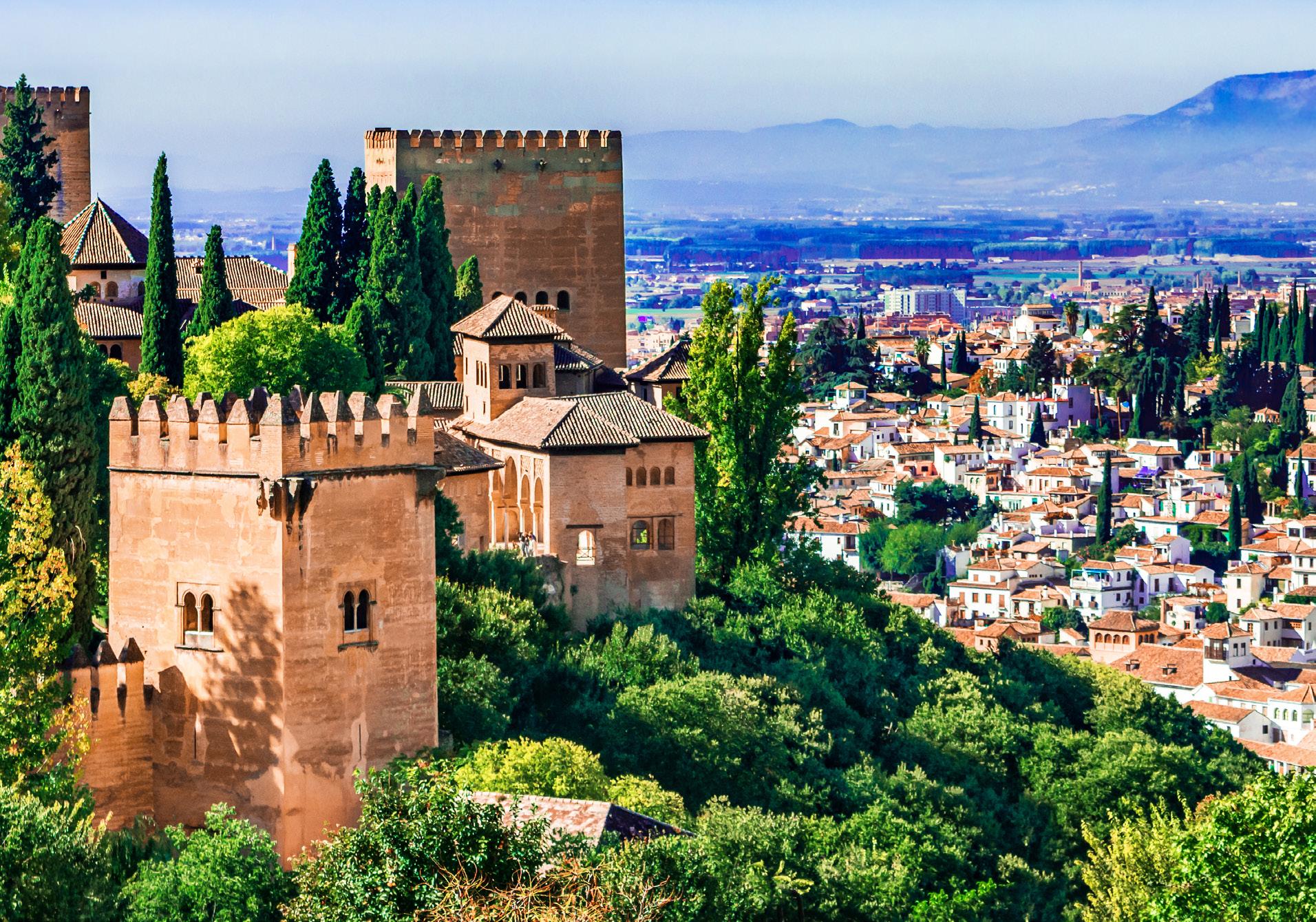
emphasis on justice, compassion, and community, formed the foundation of Andalusian society. The Islamic ideal of adab, or good conduct, was deeply ingrained in the social fabric, and the respect for learning, mutual respect, and the welfare of others was at the heart of Andalusian life.
The Qur’an and the Sunnah provided a moral compass for governance, encour-
example, enjoyed a period of prosperity and were able to contribute to the intellectual and cultural life of the region. The great Jewish philosopher Maimonides, born in Córdoba, was a product of this unique interfaith environment and he wrote extensively on philosophy, law, and medicine, often integrating Islamic ideas into his work.
The Muslim rulers of Andalusia, the

aging rulers to act justly, to ensure the welfare of their people, and to foster a society in which the rights of individuals, regardless of their faith or ethnicity, were respected.This was especially evident in the era of convivência, the period of coexistence, when Muslims, Jews, and Christians lived side by side, often learning from one another and contributing to the flourishing of the culture.
For Muslims, the coexistence in Andalusia was seen as a manifestation of the Islamic principle of tolerance and dhimma — the protection of non-Muslim communities living under Islamic rule. The concept of dhimma provided a framework for the peaceful coexistence of people of different faiths. The Jews of Andalusia, for
Umayyad Khalīfas and the later dynasties, understood the importance of spiritual guidance in their political and social responsibilities. The establishment of beautiful mosques, such as the Great Mosque of Córdoba, and the construction of tranquil gardens, such as those in the Alhambra, were not only architectural achievements but expressions of a deep reverence for the Creator.
Andalusia represented the realization of the Islamic principle that beauty in the world is a reflection of divine beauty. The architectural and artistic achievements of Andalusia were seen as an expression of the harmony between the physical and spiritual realms. The exquisite calligraphy, the intricate geometric designs, and the delicate arabesques that adorned the

were not just decorative; they were acts of devotion. In every tile, every arch, and every carving, there was the reminder of the infinite nature of Allah.
The Alhambra in Granada, a masterpiece of Islamic architecture, is the epitome of Andalusian artistic achievement. It remains a symbol of divine beauty and tranquility, a physical manifestation of the paradise promised to the faithful. The flowing water in its fountains and the intricate designs on its walls are reminders of Allah’s Mercy and the eternal nature of His creation.
Despite its cultural and intellectual brilliance, the reign of the Islamic Empire came to an end. The grandeur of Al-Andalus began to wane in 1492, when the Catholic Monarchs, Ferdinand and Isabella, completed the Reconquista by capturing Granada, the last Muslim stronghold in the Iberian Peninsula. The fall of Granada marked the end of a 700-year Muslim presence in Spain and the beginning of a period of religious intolerance and political upheaval. The expulsion of Jews and Muslims from
forever altered the religious landscape of the region.
The fall of Al-Andalus marked not only the loss of a political entity but the end of an era of intellectual and spiritual harmony. It was a tragic turning point, marking the loss of a society that had embodied the ideals of Islamic governance—justice, tolerance, and intellectual flourishing.
Yet, even as the final chapter of Al-Andalus was written, its legacy endured, leaving an indelible mark on Europe, particularly during the Renaissance. The knowledge and ideas that flourished in Andalusia—through the translation of Arabic texts into Latin—reintroduced Greek and Roman wisdom to the West, sparking a new era of intellectual and artistic achievement. The intellectual contributions of Andalusian scholars, such as the preservation of classical knowledge, advancements in medicine, mathematics, astronomy, and the philosophical writings of figures like Ibn Rushd (Averroes) and Ibn Sina (Avicenna), continued to influence European thought
long after Al-Andalus’s political demise.
The architectural wonders of Al-Andalus stand as lasting symbols of the ingenuity and artistry that defined this era. The Alcázar of Seville, the Mezquita of Córdoba, and the Alhambra of Granada continue to inspire awe and admiration, embodying the heights of cultural and artistic achievement reached during the Golden Age of the Islamic Empire in Andalusia. These monuments are not just physical structures but also testament to the potential for cultural flourishing, intellectual exchange, and the transformative power of knowledge.
Today, the name Andalusia evokes a

sense of nostalgia for a time when culture, faith, and reason coexisted in a delicate but extraordinary balance. It serves as a powerful reminder of what can be achieved when knowledge, art, and spirituality come together in harmony. The legacy of Al-Andalus is not confined to the pages of history but lives on, a timeless beacon guiding humanity toward the heights it can reach when guided by wisdom, justice, and beauty. The light of civilization that once burned bright in the heart of the Iberian Peninsula continues to shine across the centuries, inspiring future generations.